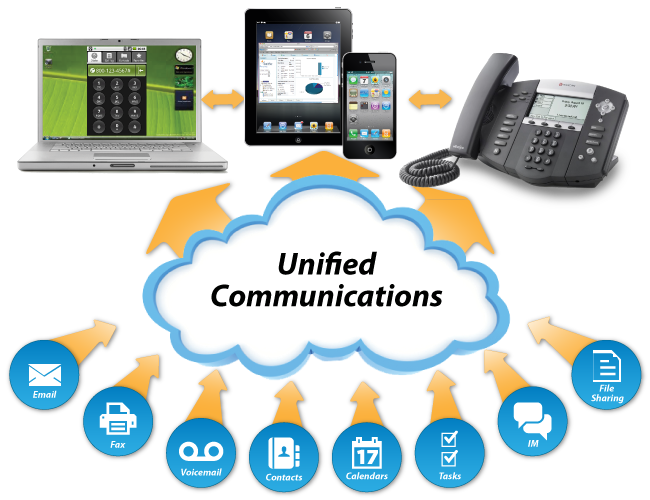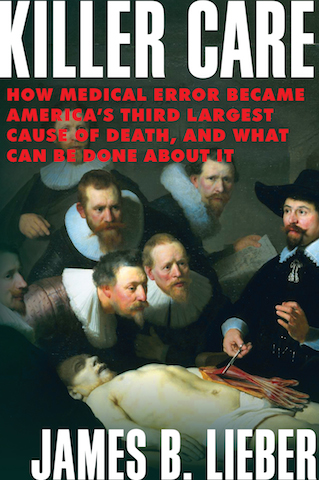healthcare industry
See the following -
Interoperability among Connected Medical Devices Can Potentially Transform Healthcare
 Connected health infrastructure is emerging as a binding agent for diverse devices and workflows, aiding diagnosis, monitoring and prevention in the healthcare industry. For such an infrastructure to be efficient, stakeholders must first ensure that interoperability and connectivity standards are in place. New analysis from Frost & Sullivan, Healthcare and Medical Device Connectivity and Interoperability, finds that the adoption of connected healthcare infrastructure is not uniform across the world. This is primarily due to the lack of a holistic digital healthcare strategy that focuses on integrated care models.
Connected health infrastructure is emerging as a binding agent for diverse devices and workflows, aiding diagnosis, monitoring and prevention in the healthcare industry. For such an infrastructure to be efficient, stakeholders must first ensure that interoperability and connectivity standards are in place. New analysis from Frost & Sullivan, Healthcare and Medical Device Connectivity and Interoperability, finds that the adoption of connected healthcare infrastructure is not uniform across the world. This is primarily due to the lack of a holistic digital healthcare strategy that focuses on integrated care models.
Is 4D Printing Next For Healthcare?
The healthcare industry will be among the first to reap the benefits of emerging four-dimensional printing technology, according to a new report from Frost & Sullivan...In the coming years, this technology could have a disruptive effect on healthcare and other industries, according to the study, impacting everything from artificial organs to smart sensors to nano technology...
- Login to post comments
Is Big Data Already Outpacing Health IT?
Call it super-mega big data. Taking just one example, cancer research, highlights how far the healthcare industry has yet to go to actually make sense from the mountains of information that already exist. Read More »
- Login to post comments
Is Cloud Faxing the Solution to the Health IT Usability and Interoperability Crisis?
 The Healthcare industry is in profound crisis as the HITECH Act of 2009 led medical facilities across the United States to spend in excess of $3 trillion on the purchase and implementation of expensive electronic health records (EHRs) under the Meaningful Use program. Yet, the most fundamental goals of electronic records Nirvana that were promised have not been achieved. For multiple reasons, EHRs have turned out to lack usability and be non-interoperable. In fact, most monopoly EHR vendors are engaged in what is commonly called “data blocking.” In most cases physicians are unable to obtain medical records for the patients they are seeing and patients have a hard time getting a hold of their own medical records. That means that the medical records are not available at the most important moment, the caregiver/patient encounter, and are not available to the patients themselves and their family members.
The Healthcare industry is in profound crisis as the HITECH Act of 2009 led medical facilities across the United States to spend in excess of $3 trillion on the purchase and implementation of expensive electronic health records (EHRs) under the Meaningful Use program. Yet, the most fundamental goals of electronic records Nirvana that were promised have not been achieved. For multiple reasons, EHRs have turned out to lack usability and be non-interoperable. In fact, most monopoly EHR vendors are engaged in what is commonly called “data blocking.” In most cases physicians are unable to obtain medical records for the patients they are seeing and patients have a hard time getting a hold of their own medical records. That means that the medical records are not available at the most important moment, the caregiver/patient encounter, and are not available to the patients themselves and their family members.
- The Future Is Open
- Login to post comments
Is It Time to Purchase Your Own Quantum Computer?
 I want to talk about quantum computing – and why healthcare needs to looking ahead to it. Let’s start with this: for the low, low price of $5,000, you could have your very own quantum computer. Spin Q Technology, a Chinese company, has recently introduced its Spin Q, a less expensive, less powerful version of its Spin Q Gemini, which went for $50,000. Other quantum computers, such as those by Google, IBM, or D-Wave, have a few more zeroes in their price. Spin Q Technology has a clear goal in offering this version:We believe that low-cost portable quantum computer products will facilitate hands-on experience for teaching quantum computing at all levels, well-prepare younger generations of students and researchers for the future of quantum technologies."
I want to talk about quantum computing – and why healthcare needs to looking ahead to it. Let’s start with this: for the low, low price of $5,000, you could have your very own quantum computer. Spin Q Technology, a Chinese company, has recently introduced its Spin Q, a less expensive, less powerful version of its Spin Q Gemini, which went for $50,000. Other quantum computers, such as those by Google, IBM, or D-Wave, have a few more zeroes in their price. Spin Q Technology has a clear goal in offering this version:We believe that low-cost portable quantum computer products will facilitate hands-on experience for teaching quantum computing at all levels, well-prepare younger generations of students and researchers for the future of quantum technologies."
- Login to post comments
Is The Presidential Election Healthcare's Own Perfect Storm For EHRs?
When two opposing forces collide, the results can be devastating. Earlier this week Hurricane Sandy — a warm air, warm-water storm moving up from the south — met up with a bitterly cold nor’easter, creating a monster storm that battered the East Coast. On the eve of the presidential election, healthcare leaders cannot help but wonder if the industry facing its own perfect storm. Read More »
- Login to post comments
Is the Technology Gap the Reason Why Medical Errors are the 3rd Leading Cause of Death in the US?
 Hardly a day goes by without some new revelation of an information technology (IT) mess in the United States that seems like an endless round of the old radio show joke contest, “Can You Top This” except that increasingly the joke is on us. From nuclear weapons updated with floppy disks, to critical financial systems in the Department of the Treasury that run on assembler language code (a computer language initially used in the 1950s and typically tied to the hardware for which it was developed), to medical systems that cannot exchange patient records leading to a large number of needless deaths from medical errors.
Hardly a day goes by without some new revelation of an information technology (IT) mess in the United States that seems like an endless round of the old radio show joke contest, “Can You Top This” except that increasingly the joke is on us. From nuclear weapons updated with floppy disks, to critical financial systems in the Department of the Treasury that run on assembler language code (a computer language initially used in the 1950s and typically tied to the hardware for which it was developed), to medical systems that cannot exchange patient records leading to a large number of needless deaths from medical errors.
- Login to post comments
IT Consumerization: A Case Study of BYOD in a Healthcare Setting
This article focuses on the implementation of BYOD in a healthcare setting. First, the challenges of implementing BYOD in the healthcare industry are examined. Next, a case study of The Ottawa Hospital is developed to illustrate the practical benefits and hurdles that must be overcome when hospital staff begin using consumer IT devices in the workplace. Finally, recommendations are offered to help healthcare organizations develop and implement a successful BYOD strategy. Read More »
- Login to post comments
j2 Cloud Services to Showcase Secure Cloud Fax Solutions at HIMSS 2019
 j2 Cloud Services™, a world-leading provider of digital cloud fax solutions, will showcase its portfolio of "interoperable" secure cloud fax solutions, including eFax Corporate, Sfax and MyFax, at the 2019 Healthcare Information and Management Systems Society (HIMSS) Annual Conference & Exhibition. As a HIMSS Emerald member, eFax Corporate's presence at HIMSS is slated to be one of its strongest ever! The j2 Cloud Services portfolio of all-digital cloud fax solutions, including eFax Corporate, Sfax and MyFax, replaces the need for antiquated analog fax machines and paper-based faxing with an online document transfer service that is both secure and HIPAA compliant.
j2 Cloud Services™, a world-leading provider of digital cloud fax solutions, will showcase its portfolio of "interoperable" secure cloud fax solutions, including eFax Corporate, Sfax and MyFax, at the 2019 Healthcare Information and Management Systems Society (HIMSS) Annual Conference & Exhibition. As a HIMSS Emerald member, eFax Corporate's presence at HIMSS is slated to be one of its strongest ever! The j2 Cloud Services portfolio of all-digital cloud fax solutions, including eFax Corporate, Sfax and MyFax, replaces the need for antiquated analog fax machines and paper-based faxing with an online document transfer service that is both secure and HIPAA compliant.
- Login to post comments
j2 Cloud Services™ Showcases New Cloud Fax Products at HiMSS 2019

j2 Cloud Services...will demonstrate its commitment to interoperable healthcare communications at the 2019 Healthcare Information and Management Systems Society (HIMSS) Annual Conference & Exhibition. HiMSS 2019 is taking place February 11-15 in Orlando, Florida. At HIMSS, eFax Corporate®, one of the all-digital cloud fax solutions offered by j2 Cloud Services, will discuss the upcoming release of four new products: eFax Corporate for Healthcare Mobile Application: The eFax Corporate Mobile App for Healthcare is the easiest and fastest way to receive, sign, edit, and send faxes on the go...
- Login to post comments
Killer Care: How Medical Error Became America's Third Largest Cause of Death, And What Can Be Done About It
 ...The following year, researchers shook the profession with an article in Health Affairs entitled “‘Global Trigger Tool’ Shows that Adverse Events in Hospitals May be Ten Times Greater than Previously Measured.” Dr. David Classen, who did the seminal research for global triggers, served as lead author of the study, which looked at three mid-size to large (ranging from 550 to 1,000 beds) teaching hospitals associated with medical schools in the West and Northwest that participated on the condition of anonymity...When different detection methods were applied, global triggers found over 90 percent of events, the government’s Patient Safety Indicators (based on discharge summaries) found 8.5 percent, and voluntary reporting disclosed only 2 percent (afraid of censure and malpractice, doctors and nurses seldom willingly self-accuse). Classen, et al. warned: “reliance on voluntary reporting and the Patient Safety Indicators could produce misleading conclusions about the current safety of care in the U.S. health-care system and misdirect efforts to improve patient safety.”...
...The following year, researchers shook the profession with an article in Health Affairs entitled “‘Global Trigger Tool’ Shows that Adverse Events in Hospitals May be Ten Times Greater than Previously Measured.” Dr. David Classen, who did the seminal research for global triggers, served as lead author of the study, which looked at three mid-size to large (ranging from 550 to 1,000 beds) teaching hospitals associated with medical schools in the West and Northwest that participated on the condition of anonymity...When different detection methods were applied, global triggers found over 90 percent of events, the government’s Patient Safety Indicators (based on discharge summaries) found 8.5 percent, and voluntary reporting disclosed only 2 percent (afraid of censure and malpractice, doctors and nurses seldom willingly self-accuse). Classen, et al. warned: “reliance on voluntary reporting and the Patient Safety Indicators could produce misleading conclusions about the current safety of care in the U.S. health-care system and misdirect efforts to improve patient safety.”...
Leveraging The S&I Framework To Improve Collaborative Care
With the concept of collaborative care now at the forefront of the healthcare industry, organizations are working to improve the functionality and interoperability of health IT systems. To facilitate the meaningful exchange of clinical and financial information, however, it is essential for various technologies within and among organizations to effectively communicate.
- Login to post comments
Making Dollars And Sense Of The Open Data Economy
Is the push to free up government data resulting in economic activity and startup creation?
Read More »
- Login to post comments
MedicaSoft to Demonstrate the Capabilities of Advanced Web Technologies for EHRs at HIMSS16
 Our team prides itself on using cutting edge software technologies that maximize everything from interoperability to speed, integration, reliability, and usability. We use Angular.js to build our user Interface. Angular.js is a technology that was invented at Google and used by Google for its own products. We use Node.js for the serverside logic. Node.js allows us to provide incredibly fast transactions and again, use technology from this decade, unlike other health IT solutions. Node.js is growing at an exponential rate in industry – well, other industries, not healthcare.
Our team prides itself on using cutting edge software technologies that maximize everything from interoperability to speed, integration, reliability, and usability. We use Angular.js to build our user Interface. Angular.js is a technology that was invented at Google and used by Google for its own products. We use Node.js for the serverside logic. Node.js allows us to provide incredibly fast transactions and again, use technology from this decade, unlike other health IT solutions. Node.js is growing at an exponential rate in industry – well, other industries, not healthcare.
- Login to post comments
Mobile Devices, Cloud Computing: What Healthcare CIOs Fear Most
Although mobile apps that share files through the cloud are gaining in popularity in the consumer market, these apps can be unsafe in a clinical setting according to a recent study by the Ponemon Institute. Read More »
- Login to post comments